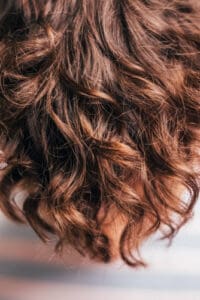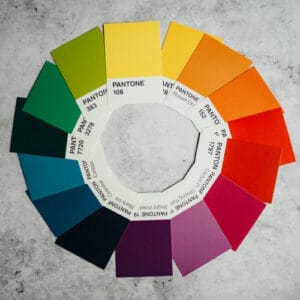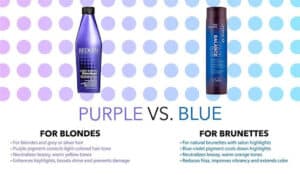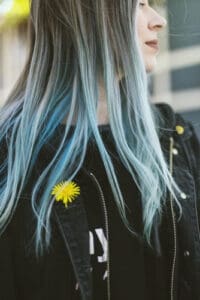Within our whole colossal beauty and haircare industry, eye-catching, bold and muted hues, soothing and luxurious shampoos, and a whole world immersed in refreshing scents bespeak the desire for appealing, luscious hair in accordance with the current canon.
How lovely it feels to jump on the bandwagon of hair transformation through balayage, ombre, highlights, toning, dyes, and streaks!
But let’s admit it, your colored hair won’t always look salon fresh and the desired crispness does fade away over time with hard tap water, harsh chemicals, and sun rays taking a toll on your hair, leaving them brassy and dry.
Brimming with viable hair dying and lightning options, the beauty and hair care industry has thus come up with the right kind of shampoos to cater to each consumer’s need.
In this regard, Blue and Purple shampoos are specially designed to maintain the shine, luster, and health of your dyed hair while avoiding brassiness.
Before drawing a comparison between blue vs purple shampoo and determining which one is the best and suitable shampoo for your particular hair color, let us first shed some light on the undertones of your hair.
Understanding brassiness
Brassiness simply means those unwanted warm yellow or orange undertones that emerge once the fresh color on the hair starts to rip off.
A lot of sun exposure, overuse of hair heating treatments, minerals in your tap water, and chlorine in swimming pools all can contribute to fading hair color and bringing out undertones from the scalp.
Lana Grand, a Los-Angeles based celebrity hair stylist and colorist serving for 17 years in the beauty industry says that this happens because “Human hair is composed of colored pigments that are invisible to the naked eye but when the hair is colored, all those pigments rush to the surface.”
This clearly explains that just like our skin colors, our hair has warm undertones.
For brunettes, these undertones are usually yellow in color whereas, in blonde colored hair, the pigment is orange, copper, or red.
In order to curb those brassy tones, blue and purple shampoos come to the rescue to deliver vibrance and boost shine to the dyed and lightened locks.

Blue and Purple shampoos are used to avoid the brassy hair with emerging copper undertones
Blue vs Purple shampoo – The Difference?
No! It is not just about the apparent bottle color. It has more to do with the formula and color correction theory.
Think of the color wheel from your art class showing different color spectrums. Orange falls opposite to blue color while purple lies opposite to yellow color which means that these opposing colors have the ability to cancel out or neutralize each other.

Purple lying opposite to yellow and blue sitting opposite to orange. This means that those colors cancel out/neutralize the opposite ones.
In a nutshell, blue shampoo neutralizes warm orange/copper undertones that are generally found in brunettes, and purple cancels out yellow undertones found in blonde hair, quite efficiently to tone them down, leaving a cooling effect.
In terms of formulation, blue shampoo is packed and formulated with blue to violet tinged pigment that penetrates into your hair each time you shampoo them to neutralize warm orange/copper undertones and bring shine and lusciousness to your hair.
Similarly, purple shampoo is formulated with pure purple pigments that bond with your hair with each shampooing session to neutralize warm yellow undertones in order to maintain the beautiful vibrance and freshness for your blonde locks, avoiding any damage to your colored or treated hair.
Some other differences:
- Purple shampoo tones the hair comparatively quicker due to being deposited on lighter-colored hair. The blue shampoo may take a little longer to tone since it works to tone darker hair.
- Along with the color, both have different scents and fragrances. Although both equally smell well.
- Because blue shampoo tends to take a bit longer to tone the darker brunette hair, it is best to let it settle for a few more minutes than the purple shampoo.
Moreover, you may prefer to use it for a longer period of time to find noticeable results when it comes to perfect neutralization. Darker shades do not immediately show clear results.

The Differences Between Purple Shampoo and Blue Shampoo
Which One Should I Use?
- If you are a brunette struggling to control your brassy locks, then blue shampoo is the right fit for you. Purple would not really work in this case.
- The reverse is true for blondes! Go for the purple shampoo to achieve that immaculate shine and cooler tones!
What If I Have Multiple Undertones?
Even if you have multiple undertones, there will always be a dominating one.
For example, if you are a brunette and have coexisting orange and yellow undertones, but the darker and dominant (in this case, orange) undertone would most possibly lead.
Therefore, a mix of blue and purple shampoo can be applied with a slightly more ratio of blue and a lesser quantity of purple to achieve perfect neutralization, resulting in fine and glossy hair.
Furthermore, brunettes with blonde highlights may also use purple shampoo to maintain flawless highlights.

People with Multiple Undertones and Different Shades Of Hair should consider a Dominant Undertone
Blue vs Purple Shampoo – The Benefit?
If you have ever got your hair colored professionally, you may have noticed that they also use the very same shampoos and then prep up your hair with conditioners.
Whether it is a blue or a purple shampoo, both are so excellently formulated as to keep up with your hair’s natural luster and shine that you do not have to visit those expensive salons again and again to maintain the hair.
Having these shampoos in your bathroom cabinets is the best investment for fine post-treatment care because you can maintain your hair color just by a simple wash at home without the hassle of making appointments and spending time, money, and energy for a salon look.
Are Blue and Purple Shampoos only for Colored Hair?
While these amazing shampoos are a treat for the colored heads, people with virgin hair (hair that has never been color-treated) can also benefit from their amazing results by occasionally shampooing with blue and purple shampoos (according to their natural hair color) since both these shampoos eradicate dullness and restore brightness for even the undyed hair.
Interestingly, through a survey, we found out that blue and purple shampoos were equally liked by women with virgin, natural hair.
A large percentage of them agreed that it helped their hair become shinier, further highlighting their natural and beautiful hair color.
How To Use The Blue And Purple Shampoo?
Honestly, there is no rocket science when it comes to using them. In fact, achieving that salon look could not be any simpler.
- Apply the shampoo (remember: blue for no orange, purple for no yellow) thoroughly onto wet and damp hair and let it settle for 2-3 minutes.
- If using a purple shampoo, 2-3 minutes are fine due to their working on the lighter blonde shade that gives results almost instantly.
If using a blue shampoo, you can let it sit for around 5 minutes. For extreme brassiness, you may want to let the formula sit for a little longer.
- Work your fingers gently onto the scalp to form a good amount of lather.
- Unlike a regular shampoo that you normally apply on your roots, it is best to apply blue and purple shampoo as evenly as possible throughout the hair starting from roots to end to finely distribute the color overall.
- Wash immediately with lukewarm water.
- Use a regular or a professional purple/blue conditioner for a minute afterward for smoother hair. The purple and blue conditioners are designed for nourishing stressed-out hair even more perfectly.
- Follow up by a hair mask to lock in the moisture and for an added shinier look.
- Flaunt your sleek hair proudly with style!
However, there are a few things you should take care of while using blue or purple shampoo.
How often to use purple/blue shampoo
It is up to you to decide how often you want to use these toning shampoos. On average, using a blue or a purple shampoo twice to thrice a week was enough for balanced maintenance of the hair.
But, you can experiment with their effectiveness by using them daily until you achieve your desired color. Blue vs purple shampoo- both are made using safe and sulfate-free chemicals which would not dry out your hair too much even if you shampoo regularly.
In general, to maintain an ideal, well-balanced hair color, it is recommended to use them twice a week while alternating with your regular shampoo.
You do not have to completely rely on them and drop your favorite regular shampoo which is a win-win situation. Isn’t it?
How long to leave purple/blue shampoo on hair
Whether it is a blue or a purple shampoo, ensure that you let them sit for a few minutes only.
Forgetting them for longer on your scalp would not result in ending brassiness, instead, it may make the whole hair blue or purple-tinged respectively which may then require a few more washes to fade away.
People with high porosity hair, rough, damaged or even curly hair would need a lesser than suggested time to let the required shampoo sit, as all these hair types rapidly absorb the products.
So be extra cautious to not let the shampoo on for longer than 2 minutes with these hair types.
Blue vs Purple shampoo – The final verdict
Within this detailed comparison of blue vs purple shampoo, no one shampoo is better than the other. In fact, it all depends on which one is the right fit for you, according to the color theory and your undertones.
Both blue and purple shampoo subtly tone down those unwanted undertones that emerge due to the exposure to harmful UV rays and other environmental factors that make your hair dull, damaged, and uneven.
So now when you know that blue is for brunettes with red/orange/copper undertones and purple is for blondes/yellow undertones, why not pick up your favorite brand and bid farewell to those brassy locks that you always dreaded!
Leave a Reply